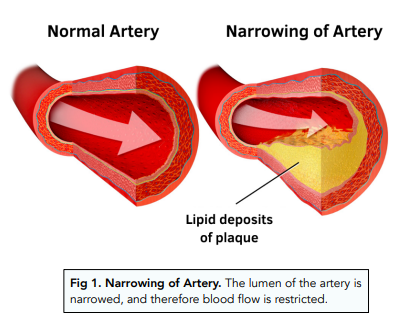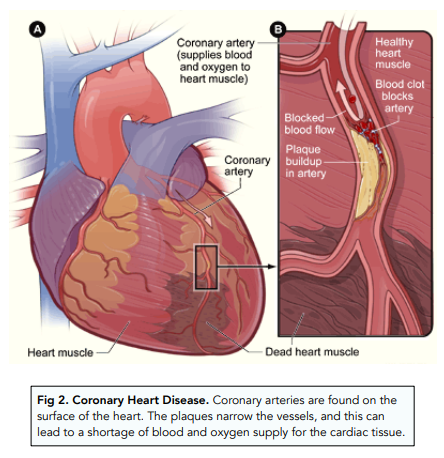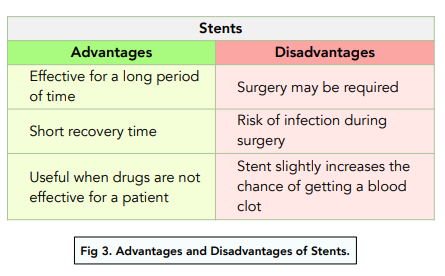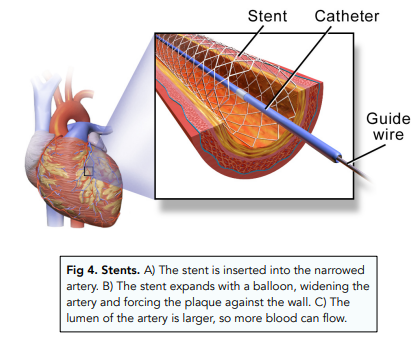Cardiovascular Disease: Stents and Lifestyle (GCSE Biology)
Cardiovascular Disease: Lifestyle and Stents
In this section, we will look at Coronary Heart Disease (CHD), which is a very common non-communicable disease affecting the heart. We will look at what causes CHD, as well as the different treatment options for CHD and other heart conditions.
Introduction to CHD
Coronary heart disease (CHD) occurs when the blood vessels (coronary arteries) supplying the heart get blocked.
- Coronary arteries supply the heart. The heart, like all other muscles in the body, needs oxygen to drive aerobic respiration. Coronary arteries are found on the surface of the heart, and they supply it with oxygen.
- In CHD, fatty deposits narrow the coronary arteries. Fatty deposits (called plaques) can build up inside the coronary arteries that supply the heart. This narrows the blood vessels, and therefore occludes the blood supply to the heart, and therefore reduces the oxygen supply to the heart.


Lifestyle and CHD
Lifestyle choices can increase your risk of developing CHD.
- Poor diet – when a person has a poor diet, they have a greater risk of obesity. This can increase the risk of cardiovascular disease, as it could lead to a higher cholesterol level leading to a greater chance of the blocking of arteries.
- Smoking – if one smokes, the walls of arteries can be damaged by chemicals in the tar, leading to a greater chance of blood clots forming. Moreover, the nicotine can lead to an increase in heart rate and the chemicals lead to an increase in blood pressure. This leads to a greater incidence of cardiovascular disease.
- Exercise – exercise can reduce the risk of cardiovascular disease, as it increases the blood supply to the heart and reduces cholesterol levels.
Other risk factors that can contribute to the risk of developing CHD:
- Stress – increased stress levels can increase your risk.
- Genetic predisposition – CHD runs in your family and is passed down in your genes.
- Age – being older can increase your risk.
- Gender – males have a higher risk than females
Surgical Treatment of CHD
We can treat cardiovascular disease using drugs, mechanical devices or transplant. We will focus on the use of each of these for treating CHD specifically.
Stents (Mechanical Device)
- Coronary heart disease can be treated using stents. In order to restore the blood supply to the heart, the coronary arteries must be reopened. Stents are tubes that are placed inside the artery in order to keep it open. This ensures that blood can keep flowing.


Angioplasty
- Coronary heart disease can be treated using angioplasty. In order to restore the blood supply to the heart, the coronary arteries must be reopened. Similar to stents, balloons are inserted into the artery and
are inflated. This opens up the blocked artery, allowing blood to flow through.
Coronary Bypass Surgery
- Coronary heart disease can be treated using bypass surgery. This surgery involves taking healthy blood vessel from another part of the body and surgically inserting it so the blocked vessels are bypassed
Cardiovascular disease (CVD) is a condition that affects the heart and blood vessels, causing them to become narrowed or blocked. This can lead to symptoms like chest pain, shortness of breath, and heart attacks.
A stent is a small metal mesh tube that is used to keep blood vessels open and allow blood to flow freely. It’s often used to treat conditions like CVD, when a blood vessel has become narrowed or blocked.
When a blood vessel becomes narrow or blocked, it can be difficult for blood to flow through it. A stent can be inserted into the affected vessel to help keep it open and allow blood to flow more easily.
Having a stent is not a permanent solution for CVD, but it can help to improve symptoms and reduce the risk of further complications. To keep CVD under control, it’s important to make lifestyle changes such as eating a healthy diet, exercising regularly, and quitting smoking.
There are several lifestyle changes that can help to prevent CVD, including:
Eating a healthy diet that is low in saturated fat, salt, and sugar
Exercising regularly for at least 30 minutes a day
Quitting smoking
Drinking alcohol in moderation
Managing stress levels
While CVD cannot be completely prevented, making lifestyle changes and managing risk factors such as high blood pressure, high cholesterol, and obesity can significantly reduce the risk of developing the condition.
There is currently no cure for CVD, but it can be treated and managed with lifestyle changes, medication, and medical procedures like stenting. The goal of treatment is to manage symptoms, prevent complications, and reduce the risk of future heart problems.






Still got a question? Leave a comment
Leave a comment